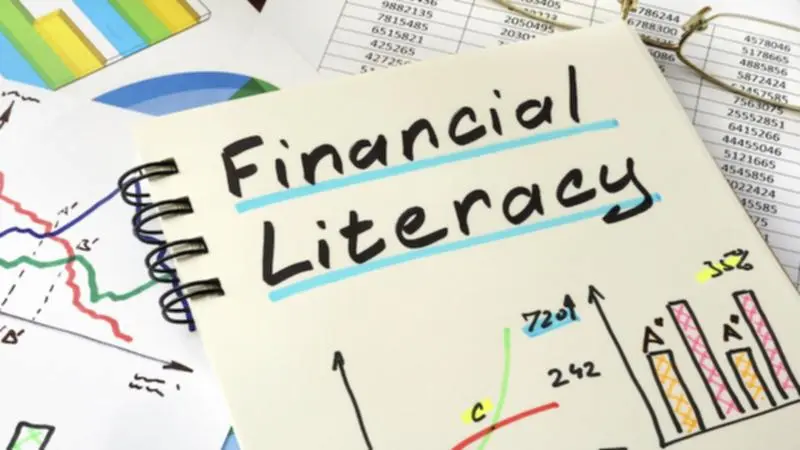Knowing how to handle money is really important in life. It helps people make smart choices about their money. You can start learning about money when you’re in elementary school. That’s a good time to learn the basics of managing money. In this article, we’ll look at seven fun and helpful activities for elementary students to learn about money.
Table of contents
What is Financial Literacy?
Financial literacy is the ability to understand and manage money effectively. It helps to equip children with essential skills like budgeting, saving, and making informed spending choices. These skills are crucial as they form the basis of sound financial decision-making throughout one’s life.
Why It Matters for Elementary Students?
Teaching financial literacy for elementary students is like planting the seeds of responsible money management for kids early on, helping them build solid financial habits from a young age. This early start is crucial because it shapes their financial mindset from the very beginning, providing a strong foundation for making wise financial choices in the future.
7 Financial Literacy Activities for Elementary Students
1. Money Math Games
Money math is a game which is a fun and interactive way to teach kids about counting, adding, and subtracting money. Games like “Grocery Store Math” or “Money Bingo” make learning about currency engaging.
Benefits
- Reinforces basic math skills.
- Introduces the concept of money in a playful manner.
- Encourages healthy competition among students.
How to Implement
Create play-money kits, and organize game sessions during math classes or as extracurricular activities. Online resources and apps can also be used for digital money games.

2. Savings Jar Challenge
The Savings Jar Challenge encourages students to save money regularly. Each student gets a jar where they can deposit their allowance, birthday money, or earnings from chores.
- Learning Objectives
- Develops the habit of saving and promote to start a best saving account for kids
- Teaches delayed gratification.
- Demonstrates the power of compound interest.
- Step-by-Step Guide
- Provide students with clear jars labeled “Savings.”
- Set goals for what students can save for.
- Regularly discuss progress and offer rewards for reaching milestones.
3. Budgeting with Allowances
Teaching Budgeting Concepts
Budgeting is the base of money management, So it is essential to learn that. Teach about budgeting for kids will give them the idea of utilisation of money effectively. Try to show budgeting with real life examples.
Setting Up Allowances
Parents can play a vital role in this activity by providing their children with weekly or monthly allowances. These allowances become the basis for practicing budgeting skills. Help students create budgets that allocate their allowance to various categories such as saving, spending, and even giving. Encourage students to set goals for each category.
Real-Life Applications
To reinforce the importance of budgeting, engage students in discussions about real-life scenarios where budgeting is crucial. For example, talk about planning for a family outing, where budgeting ensures that everyone can enjoy the outing without overspending. Discuss managing back-to-school expenses, where budgeting helps in buying necessary supplies while staying within a limit.
4. Entrepreneurial Adventures
Teach Kids About Entrepreneurship
Organize activities like setting up a lemonade stand or a craft sale, and use these ventures to teach the concepts of income, expenses, and profit. Explain that income is the money they earn from their business, expenses are the costs involved in running the business, and profit is what’s left after subtracting expenses from income.
Lemonade Stand Example
Walk students through the process of setting up a lemonade stand. Discuss pricing strategies for their products, which involves understanding cost and profit margins. Encourage them to keep track of their earnings, helping them understand the financial performance of their small business.
Lessons Learned
Ask students what worked well, what didn’t, and what they would do differently next time. Because, this debriefing helps them gain valuable insights into running a business. Additionally, inspire creativity by encouraging students to brainstorm and develop their ideas for other small businesses they could start in the future.

5. Storytime with Finance Books
Selection of Age-Appropriate Books
Curating a list of children’s books that introduce financial concepts is a delightful way to teach financial literacy. Some popular choices include titles like “Bunny Money” and “A Chair for My Mother.” These books often feature relatable characters and engaging stories that resonate with young readers.
Reading Together and Encouraging Discussions
Tell them to read the books together as a class or during library time, after reading, engage students in discussions about the financial lessons they learned from the stories. Encourage them to share their thoughts on how the characters handled money matters and what they would have done differently.
Benefits of Storytelling
Highlight the benefits of storytelling in teaching financial concepts. Stories help children relate to abstract financial ideas in a relatable and memorable way. The characters’ experiences in the books can serve as valuable teaching tools. Also check out what is digital story telling for kids.
Recommended Reading List for Parents
Finally, provide parents with a list of recommended financial literacy books for further reading at home. Encouraging parents to continue the conversation about money and finance with their children enhances the impact of this activity.
6. Field Trips to Financial Institutions
Educational Visits
Organizing field trips to local banks or credit unions offers students a hands-on experience in understanding financial institutions. These visits are both educational and exciting for young minds.
Learning About Banks
During the field trip, explain the roles of banks in our financial system. Discuss how banks safeguard money, the concept of savings accounts, and the importance of depositing money in a safe place. This activity let them understand the workings of banks and makes them more accessible to students.
Safety Measures
Focus attention on the importance of financial security during the field trip. Explain to students how banks ensure the safety of their customers’ money through measures like security systems and access restrictions. Teach them about the importance of keeping their personal financial information and identification secure.
7. Financial Literacy Workshops
Collaborating with Experts
To deepen financial education, partner with financial professionals or organizations to conduct workshops in schools. These experts can provide valuable insights and real-world experiences in finance.
Workshop Content
Design workshop sessions that cover essential financial topics such as budgeting, saving, investing, and the basics of financial planning. Tailor the content to suit the age and comprehension levels of elementary students, ensuring it is both engaging and interactive. A well-structured financial literacy course for kids can help them develop strong money management skills in a fun and relatable way, setting them up for a successful financial future..
Conclusion
In conclusion,introducing financial literacy in elementary students is an investment in their future. These seven activities are just the beginning, and there are countless creative ways to educate young minds about money matters. Remember that the journey to financial literacy is ongoing, and with dedication, patience, and the right resources, we can empower our children to make informed and responsible financial decisions throughout their lives. Start today, and watch your students thrive! To get your hands on more such educational and free resources on coding, robotics, game development, etc., do check out the Brightchamps Blog Page now!
To get your hands on more educational and free resources on coding for kids, robotics for kids, financial education for kids, etc., do check out the BrightCHAMPS Page now!
Frequently Asked Questions (FAQ’S)
A1. It’s a good idea to begin teaching financial literacy to elementary students as early as possible. Kids as young as five or six can start learning basic money concepts, and as they grow older, you can introduce more advanced financial ideas.
A2. Yes, there are many online resources available for teaching financial literacy to children. You can find websites, videos, games, and apps designed to make learning about money fun and engaging.
A3. To make financial education fun and interesting, use hands-on activities, games, and real-life examples. You can involve your child in simple budgeting tasks, set up a savings jar, or play money-themed board games together.
A4. One of the most important financial concepts to teach elementary students is the difference between needs and wants. Helping them understand the importance of prioritizing needs over wants is a fundamental building block for smart financial decision-making.
A5. Yes, financial literacy activities can be integrated into the school curriculum. Many schools now include financial education as part of their programs. If your child’s school doesn’t offer it, you can still teach them about money at home or advocate for financial literacy in the school curriculum.


 We are an army of educators and passionate learners from BrightChamps family, committed to providing free learning resources to kids, parents & students.
We are an army of educators and passionate learners from BrightChamps family, committed to providing free learning resources to kids, parents & students.














